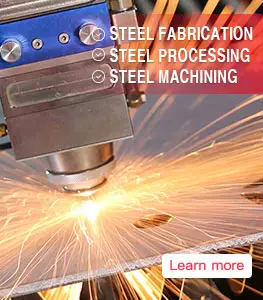Welcome to BBN Steel Materials Factory
What is the difference between ASTM A514 GrB and A572 steel?

ASTM A514 GrB carbon steel and A572 carbon steel are high-strength materials that are commonly used in construction and industrial applications, there are some key differences between them. Here are a few of the main differences:
1. Chemical Composition: ASTM A514 GrB is an alloy steel that contains small amounts of carbon, manganese, phosphorus, sulfur, silicon, nickel, chromium, molybdenum, boron, vanadium, titanium, and copper. ASTM A572 steel also contains small amounts of carbon, manganese, phosphorus, sulfur, and silicon, but it does not contain any other alloying elements.
2. Strength: ASTM A514 GrB has a higher yield strength and tensile strength than ASTM A572 steel. However, it has a more limited range of thicknesses and may not be suitable for applications that require high impact resistance at low temperatures.
3. Weldability: While both materials are weldable, ASTM A572 steel is generally considered to be more weldable than ASTM A514 GrB. This is because ASTM A572 steel has a lower carbon content, which makes it easier to weld without breaking.
4. Applications: ASTM A514 GrB is commonly used in heavy-duty applications that require high strength, such as bridge construction, mining equipment, and crane booms. ASTM A572 steel is commonly used in construction and industrial applications that require a high-strength, low-alloy structural steel.
ASTM A514 GrB carbon and low-alloy steel is a high-strength, quenched and tempered alloy steel that is commonly used in structural and heavy construction applications. It has a yield strength of 100,000 psi (690 MPa) and a tensile strength of 110-130 ksi (760-895 MPa). One of the key features of ASTM A514 GrB is its high strength-to-weight ratio, which makes it ideal for applications where weight is a critical factor, such as bridge construction, mining equipment, and crane booms. It also has good weldability and toughness, which makes it suitable for welding and forming.
However, there are some limitations to ASTM A514 GrB. It has a limited range of thicknesses that it can be manufactured in, typically ranging from 1/4 inch to 4 inches. Additionally, it is not recommended for applications that require high impact resistance at low temperatures. Overall, ASTM A514 GrB is a strong, durable steel that is commonly used in heavy-duty applications.
ASTM A572 carbon steel is a high-strength, low-alloy structural steel that is commonly used in construction and industrial applications. It has a yield strength of 50,000-65,000 psi (345-450 MPa) and a tensile strength of 65,000-85,000 psi (450-585 MPa).
One of the key features of ASTM A572 steel is its high strength-to-weight ratio, which makes it ideal for structures that need to support heavy loads without adding excessive weight. It is commonly used in bridges, buildings, and other structures that require high-strength steel. The ease of welding, machining and forming of ASTM A572 steel makes it a popular choice for structural applications. It also has good toughness and ductility, which means it can withstand high stress conditions without breaking.
there are some limitations to ASTM A572 steel as well. It is not recommended for applications that require high-temperature resistance or resistance to corrosion. Additionally, it may not be suitable for applications that require high impact resistance at low temperatures. Despite these limitations, ASTM A572 steel is a versatile material that is widely used in a variety of applications.
.webp)
.webp)
.webp)
.webp)
.webp)
.webp)
.webp)
.webp)
.webp)



Leave a Message